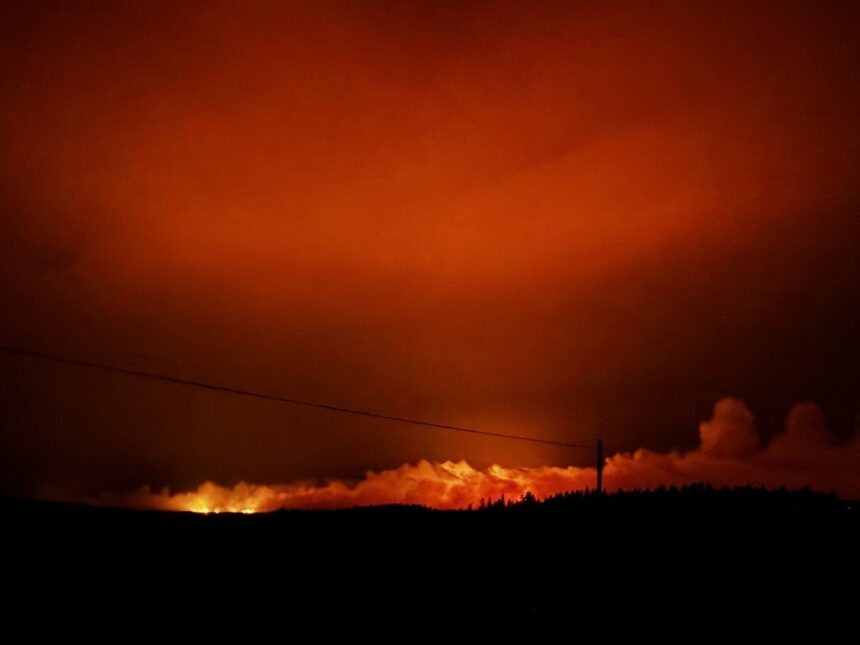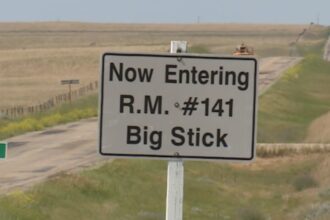As flames tear through the forests of rural Newfoundland, dozens of volunteer firefighters have abandoned their day jobs to battle an increasingly dangerous wildfire, exposing a critical vulnerability in Canada’s emergency response infrastructure. The blaze, which has already consumed over 4,000 hectares near the community of Millertown, represents more than just another climate crisis event—it illuminates the precarious foundation upon which many rural communities build their emergency services.
“I haven’t been to my regular job in eight days,” explains Jamie Stoodley, fire chief for the Millertown Volunteer Fire Department. “My boss understands, but that doesn’t make the financial strain any easier. This is what we signed up for, but nobody signs up expecting to miss two weeks of paychecks.”
The wildfire, fueled by unusually dry conditions and high winds, erupted last Wednesday approximately 15 kilometers from Millertown. The town’s population of just 800 residents now faces potential evacuation as the volunteer force of 24 firefighters works alongside provincial forestry officials to contain the spread. What makes this situation particularly concerning is that such scenarios are becoming increasingly common across Canada.
According to the Canadian Association of Fire Chiefs, nearly 85% of Newfoundland and Labrador’s firefighting force consists of volunteers—individuals who maintain regular employment while serving their communities without compensation. This system, once a point of community pride, has become increasingly strained as climate change intensifies wildfire seasons and extends their duration.
“We’re seeing a troubling trend across rural Canada,” notes Dr. Ellen Richards, a disaster management specialist at Memorial University. “Volunteer firefighters are being asked to shoulder increasingly demanding responsibilities while still maintaining their livelihoods. The economic impact on these individuals can be devastating.”
The provincial government has acknowledged the situation but has yet to implement comprehensive solutions. Current policies provide no guaranteed income protection for volunteer emergency responders who miss work, creating a financial disincentive that threatens recruitment efforts for volunteer departments already struggling with declining numbers.
“Twenty years ago, we had a waiting list of people wanting to join,” Stoodley recalls. “Now we can barely maintain minimum staffing levels. Young people simply can’t afford the commitment anymore.”
The economic ripple effects extend beyond the firefighters themselves. Local businesses in Millertown report significant disruptions as employees take leave to fight the fires. The Lakeside Lumber Mill, the area’s largest employer, has seen productivity drop by nearly 40% as several key staff members assist with firefighting efforts.
Provincial officials maintain that the current system remains viable despite these challenges. “Our volunteer firefighters represent the best of our communities,” says Minister of Municipal Affairs Sarah Collins. “We continue to explore ways to support them while maintaining the volunteer structure that has served our rural areas for generations.”
However, critics argue that the increasing frequency and intensity of climate-driven disasters necessitate a fundamental reevaluation of how emergency services are structured in rural areas. A report published earlier this year by the Canadian Climate Institute projected that wildfire frequency in Atlantic Canada could increase by up to 30% by 2050, placing even greater demands on already-stretched volunteer services.
As Newfoundland’s volunteer firefighters continue their battle against the advancing flames, the question emerges with new urgency: How long can we ask community heroes to choose between protecting their neighbors and protecting their livelihoods? The answer may determine the future safety of Canada’s rural communities as climate challenges intensify.























